Comprehensive Heroin Addiction Treatment at Thrive Treatment: Detox, Therapy, and Recovery Programs in Los Angeles
What Is Heroin Addiction?
Heroin addiction is a devastating disease that can affect everyone, from those directly engaging with the drug to their loved ones, families, and communities. Despite its destructive effects, an estimated one million people were living with heroin addiction in 2021 alone. It is a form of addiction where you, your family member, or a loved one experience a compulsive need to engage with heroin despite having experienced its destructive consequences or even against your own better judgment.
Those living with heroin addiction may also be aware of the destructive nature of the drug but may continue to use it despite admitting these challenges. The onset of intense drug withdrawal symptoms is also common in those living with heroin addiction when the drug is not available, leading to intense urges and cravings to reengage with the drug and furthering a cycle of self-destructive behavior and substance use.
Heroin addiction can also manifest in various ways. Not all people start by using street-level heroin. Rather, chronic pain can lead to receiving prescription opioids for addressing pain. Over time, or if using these prescriptions in a way not directed by a health care professional, prescription drug addiction can develop. When these prescriptions run out, turning to street-level alternatives like heroin can be common, bringing even more dangers to daily life.
HEROIN ADDICTION
How Heroin Addiction Affects the Brain and Body
Heroin is a powerful opioid that affects both the brain and the body. While opioids like heroin or prescription drugs do alleviate pain and lead to feelings of euphoria, they are also depressants, slowing down the body’s natural processes and signals to and from the brain. This leads to slowed reaction time, cognitive function, and reflexes and even slows essential processes like respiratory function. It also causes a release of dopamine, or the “feel good” chemical, essentially “rewarding” the brain for harmful drug use, aiding in the development of addiction as the brain demands more of the drug to feel good or even “normal.” Some other effects of heroin use include:
- Intense drowsiness
- Lethargy and fatigue
- Disrupted sleep cycles
- Gastrointestinal issues
- Compromised immune system
Likewise, while opioid use can be used to address pain and aches, pains can also be a result of heroin use, counterproductively worsening pain symptoms. A compromised ability to heal from injury, or introducing new pains such as infections at injection sites or as a result of injuries incurred due to compromised decision-making while under the effects of the drug, can also worsen pain and discomfort while using heroin.
Recognizing the Signs of Heroin Addiction
Identifying the potential signs of substance abuse, especially heroin use, is crucial to taking the first step in healing. You do not necessarily have to exhibit all of these symptoms to benefit from dedicated drug treatment and to improve your quality of life. Recognizing even a few of these signs can be a reason to contact Thrive Treatment for more information on drug treatment or the healing programs at our treatment center, either for yourself or a loved one.
Some of the common physical signs of heroin use and addiction include:
- Intense drowsiness
- Constricted or pinpoint pupils
- Difficulty breathing
- Persistent scratching
- Sudden and intense weight loss
Small puncture wounds and scabs called “track marks” are also common in those injecting heroin intravenously. Bruising around these sites is also common as skin tissue is damaged from repeated injections. These track marks can be anywhere on the body with access to a vein. However, it can be difficult to identify track marks, as those living with heroin addiction may cover these physical signs of heroin addiction through the use of makeup or wearing accessories or out-of-season clothing to make it difficult to view affected areas.
Several behavioral changes can also indicate heroin addiction. These signs include:
- Adopting a secretive lifestyle, such as locking doors, having an inconsistent schedule, and not telling others when or where a person is going
- Sudden inability or unwillingness to tend to personal responsibilities, such as cleaning, personal or professional obligations, and more
- Self-isolation tendencies
- Financial instability, including a sudden inability to pay for necessities, asking for money, stealing money, or selling valuables
- Disinterest in personal hobbies
- Suddenly and consistently calling out from work, school, or not attending other obligations or social functions
Lastly, heroin addiction can lead to many mental health concerns that may demand professional treatment for you or your loved one. These signs include:
- Increase in feelings of anxiety or paranoia
- Depression or feelings of pessimism, hopelessness, or worthlessness
- Difficulty concentrating
- Intense withdrawal symptoms
- Mood swings, including angry outbursts
Risk Factors for Opioid Use Disorder
Opioid use disorder (OUD), whether heroin addiction, prescription drug addiction, or a combination of the two, is difficult to overcome. Addiction is a devastating disease that will not simply “go away” with time, nor is stopping the use of addictive substances as simple as a question of willpower or character. Rather, OUD can fundamentally change a person’s brain chemistry and often demands professional treatment to address, even in those ready to take their first step in overcoming heroin use.
Prolonged opioid substance abuse can lead to intense mental health disorders like anxiety and depression, as well as have lasting effects on your physical health. Liver damage, kidney damage, heart disease, and damage to the lungs and brain are all common as a result of heroin use. Depending on the method of administration, collapsed veins and skin infections are also common, as well as the spread of disease if using unsanitary needles or sharing paraphernalia. Cognitive impairment, psychosis, and other challenges are also possible risks of OUD.
These challenges are in addition to other ramifications of unaddressed OUD or heroin addiction. Damage to personal relationships, loss of job, legal issues, financial stress, and more are all equally as impactful to your daily quality of life, and all can be harmed through the use of heroin. However, healing is always possible, and Thrive Treatment is prepared to help you address these risks and challenges in your journey to a sober life.
INSURANCE
We Work With Most Major Insurance
At Thrive Treatment℠ we accept most private insurance plans and we are in network with Cigna, Optum, First Health, and Anthem Blue Cross. Additional payment options are available so don’t hesitate to give us a call so we can get you the help that you need.
Change Your Life with a Single Call
1-855-232-1334












ADDICTIONS
Addictions We Treat
DETOX
Detox and Withdrawal Management
Stopping the use of opioids like heroin is crucial to starting your healthy, sober life. However, ceasing the use of the drug is met with many challenges, particularly throughout withdrawal. Thrive Treatment’s dedicated detox program is designed to help you manage this first difficult hurdle in drug treatment. Drug withdrawal can be intensely difficult to navigate, with symptoms including:
- Nausea and vomiting
- Muscle pain and aches
- Sweating
- Dizziness
- Anxiety
- Paranoia
- Depression
- Disrupted sleep and nightmares
- Intense mood swings
These are all difficult to navigate and often are accompanied by intense urges and cravings to reengage with heroin. Heroin addiction can program the body and mind to believe that the drug is necessary for daily functioning despite its destructive effects. Navigating drug withdrawal while treating these symptoms is essential to prevent relapse during this first important stage of addiction recovery, with the resources and support at Thrive Treatment being able to help you navigate this time safely while overcoming these difficult challenges.
Medication-Assisted Treatment (MAT) for Opioid Withdrawal
Overcoming opioid addiction is a difficult journey, and finding the right detox and treatment for you or your loved one is crucial during this time. Emotional support and education are part of every healing journey. However, opioid addiction and withdrawal are intense, and a medicated approach to treatment may also be necessary to address specific symptoms, challenges, and goals during detox to overcome withdrawal symptoms and successfully transition to further levels of care.
Buprenorphine and methadone are both used in our MAT program to help treat opioid withdrawal symptoms, lessening the intensity of these symptoms to empower you to focus on developing your personal strategies to overcome their mental, emotional, and physical effects. Our clinic also combines medication with personalized evidence-based treatment and support to help you identify and address various challenges during detox.
Naltrexone can also be used under the direction of a health professional to block opioid receptors in the brain, lessening urges and cravings and helping to address withdrawal symptoms during this first important stage of recovery. Relapse can be most common during this first step into sobriety from heroin or opioids, and the additional support of MAT can provide the resources and relief necessary to take control of your sober healing journey.
The Role of Evidence-Based Therapy in Heroin Addiction Recovery
Evidence-based therapy is a core part of effective, sustainable change at Thrive Treatment. These treatments are based on scientific evidence, with multiple studies confirming their efficacy for treating heroin addiction, mental health disorders, or co-occurring disorders, and are designed not to just address an array of symptoms of addiction but rather support long-term sustainable sobriety and improved quality of life.
Thrive Treatment champions the use of evidence-based therapy to ensure that you can make the most of your sober efforts and dedication to overcoming addiction in your healing journey. These therapies are also personalized to your unique stations, helping you address your unique experiences with addiction, goals, challenges, and daily life in recovery and beyond. We are prepared to work with you to explore your combination of effective evidence-based therapeutic options for your most effective approach to overcoming heroin addiction, from individual and group therapy to cognitive-behavioral therapy (CBT), dialectical behavior therapy (DBT), acceptance and commitment therapy (ACT) and much more.
Individual Counseling for Substance Dependence
Overcoming addiction is a personal journey. Our approach to individual counseling can ensure that you are addressing your unique needs and goals in addiction treatment. No two people will have the same story of with drugs, alcohol, mental health disorders, or a combination thereof, and having time to sit with a trained, sympathetic professional and explore the effects of heroin, substance abuse, and substance dependence can ensure that you are receiving care that is pertinent to your recovery journey from heroin.
Each individualized treatment plan starts with talking about your needs and goals for treatment and exploring not just strategies for navigating heroin addiction and rehab but also pertinent life skills, perspectives, communication strategies, education, and more for your most personalized approach to a transformed daily life.
Group Therapy and Peer Support: Building Community
Individual counseling sessions are further supported by effective group therapy, combining personalized individual treatment with a supportive and understanding community at Thrive Treatment. This community of peers is available to you from your first step into treatment, throughout inpatient treatment, and as a part of outpatient care. Working with peers to explore new healing options, discuss new challenges, and experience a sense of belonging, community, and acceptance in sobriety can be an amazing resource throughout any stage of treatment.
Distancing yourself from past social groups that may be associated with the use of heroin is crucial for prioritizing your hard-earned sobriety. A community of peers and professionals can help you stay motivated and accountable throughout your healing journey while embracing new relationships and a new approach to daily needs, support, and sustainable sobriety.
Cognitive-Behavioral Therapy (CBT) for Coping Skills
CBT is considered the “gold standard” for evidence-based psychotherapy and involves exploring the connection between your thoughts, beliefs, and behaviors. This therapy addresses how certain learned behaviors or beliefs can impact daily life, as well as each other, to challenge self-destructive beliefs and practices, replacing them with positive, supportive strategies in recovery.
CBT is a comprehensive way of approaching change in daily life, from addressing mental health disorders and self-destructive beliefs to replacing unhealthy coping strategies like heroin and substance use with healthier alternatives for sustainable change.
In-Person
Virtual Telemedicine
THRIVE
Residential Programs for Heroin Addiction
Thrive Treatment is prepared to help you through each step of your recovery, from your first step into detox to your time in our residential treatment program. The comprehensive, around-the-clock care of dedicated professionals can be instrumental in developing a healthy daily life. Each day in residential care is filled with both evidence-based and holistic care, supporting your sober change through individual and group therapy, regular experiential therapies and engagements, and options like film therapy, music therapy, and recreational activities to help you explore new opportunities during your time with us.
Overcoming heroin addiction is hard work, and there is never a single path to addressing its myriad of effects. Our comprehensive residential programs can provide a safe and sober-curated space for you to explore new opportunities, practice coping strategies and mindfulness skills, and build a new daily routine that furthers your recovery efforts. These residential treatment programs typically last around a month before transitioning to the next level of care, though the length of your stay can vary depending on your goals, progress, and needs in heroin addiction treatment.
TESTIMONIALS
Stories of Hope & Healing
Great Program!
“Great program with friendly staff! I highly recommend you to check it out! They know what they are doing! Tanner R. is the man and provides great customer service! Talk to him and he will point you in the right direction.”
Miles S.
I am Grateful!
“I am grateful for the immediate attention I received from Matt at Thrive Treatment℠ center. He is sensitive and caring and he graciously spent time with me and my husband to help our family situation. In just a short amount of time he made a big difference and gave us hope. He definitely is passionate about helping people and gave us great perspective and advice.”
Laura B.
Top-Notch Program
“Thrive treatment is a top notch program with one of the best clinical teams in LA. When I have clients at Thrive, I know without a doubt they are receiving the authentic help that they desperately need. Thanks Clayton for the amazing program you have built!”
David B.
Great Program!
“Great program with friendly staff! I highly recommend you to check it out! They know what they are doing! Tanner R. is the man and provides great customer service! Talk to him and he will point you in the right direction.”
David F.
Boundlessly Grateful
"Thrive met my son where he was and worked to find the right mix of supports and interventions to help him create a path toward health and wellness. I am boundlessly grateful to the program and its staff. Not only does Thrive offer an array of helpful tools, but it has a staff that cares about the clients, meets them exactly where they are, and tailors treatment to their individual needs."
Lynn M.
Supportive & Informative
"Thrive treatment is a very supportive and informative IOP. I was in one of the sober livings that works with their service, the Last House, and found that in thrive treatment, I was helped not only to process my emotions as they came up, but also learned quite a lot about the different healthy coping mechanisms I could engage in to move forward without being self destructive."
Leo L.
Huge Asset in My Sobriety
"Thrive treatment was a huge asset to me in my sobriety. I will be forever grateful for the entire staff at Thrive. The facility is well furnished and in a great location that makes being there very comfortable. On top of that I felt as though the entire staff was very invested in my recovery."
Ryan S.
PHP
Partial Hospitalization Program (PHP)
PHPs are the next step in our comprehensive treatment program for heroin addiction, with this level of care landing between the 24/7 support of residential care and before outpatient treatment, helping you continue to practice sober coping strategies, self-care, and more while benefitting from a robust community of support. These programs meet five days a week, for around six hours a day, to continue exploring new strategies, engaging in effective individual and group therapy, exploring new experiential care options, and providing structure to your sober daily routine.
How PHP Bridges Detox and Outpatient Care
Addiction can continue to impact your daily life in many ways, even after graduating from a dedicated residential treatment program at Thrive Treatment. PHPs are instrumental in providing support as you begin to establish your daily life outside of a dedicated recovery community and navigate the stresses of this transition outside of a curated sober space. Experiencing new stresses outside the treatment center, such as difficult relationships or professional stresses, can be challenging to overcome, with PHPs being a great way of addressing these challenges while staying accountable for your sobriety.
In-Person
Virtual Telemedicine
Change Your Life With a Single Click...

SOBER
Outpatient and Sober Living Options
Addiction of any kind is not a disease that is traditionally “cured.” Rather, it can continue to impact your daily life, perspectives, and more for years or even the rest of your life. It is normal to still experience urges or cravings to reengage with heroin even while successfully leading a sober life. Our outpatient treatment options are designed so that you are never without support to overcome challenges at any stage of recovery.
We also work closely with The Last House, a dedicated sober living house and community filled with peers overcoming their own challenges after addiction. This community of support, understanding, and camaraderie can support your continued healing, accountability, and motivation while exploring sober daily life.
CONTACT
Comprehensive Support Services
Thrive Treatment offers a comprehensive approach to rehab at every stage of your recovery, combining evidence-based treatment and holistic therapies during each step. This comprehensive approach to sobriety includes:
- Relapse prevention planning and coping strategies
- Life skills training for long-term sobriety
- Social skills development for reintegrating into society
- Family therapy programs to explore forgiveness, sympathy, and sustainable change
Heroin is a drug that affects every facet of daily life. Your treatment should be just as comprehensive to create a sustainable approach to truly transformative healing. Our personalized care, available at every stage of your healing, is designed to create sustainable change, overcoming not just the immediate effects of heroin and opioid addiction but also helping you develop your best approach to a truly transformed, sober future.
Heroin addiction is a destructive disease, but healing and treatment are always possible. Learn how we at Thrive Treatment can support your sober journey from heroin by calling (855) 232-1344.
Our Caring Team is Standing By
1-855-232-1334

